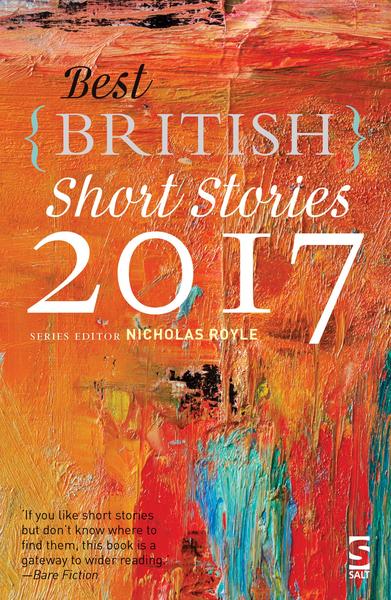You have no items in your cart. Want to get some nice things?
Go shopping
Virtually every story in Best British Short Stories 2017 circles around something unspoken. This is not officially the theme of the collection, but it’s easy to read these pieces in dialogue with one another, as they explore what it means to be unspeakable
In the very best pieces, the inability to name or describe something is at the centre of the story’s meaning. Rosalind Brown’s beautiful story, “General Impression of Size and Shape”, charts the growth, blossoming, and sharp curtailment of an adulterous affair, enabled by a mutual passion for birdwatching. Brown skilfully weaves the idea of knowing, or not knowing, through her work; the affair is never talked about, and dialogue is minimal, our narrator preferring to speak in chopped observations that range from the poetic to the telegram-esque. When the adulterous couple stop seeing each other, our narrator’s pain is reflected in the smallest of incidents: out with her binoculars, alone this time, she spots a bird on the wing, too brief a glimpse for her to be able to identify it. Her sorrow and regret is that her ex-lover—quicker on the draw and with a wider range of knowledge, or at least so we’re given to believe—could have identified it for her, but he’s not here: “disappears, will never know, a fist tightens in the stomach… But it passes, it passes, the world settles again.”
Several stories take this unknowability right up to the boundary with magical realism and even the supernatural. These forces are rarely entirely positive. The protagonist of Krishan Coupland’s “The Sea In Me”, a gifted competitive swimmer, sees the anomaly of her body as proof of an inhuman inheritance. In the final scene of the story, she has driven out to the coast with her boyfriend Martin, who wants her to come back to shore with him. She asks him for ten more minutes, and the story closes as she watches him wading back to land. There is a deep sense of uncertainty—how far could she go if she tried? Will she bother coming back?—and we, too, are not as convinced of her powers as she seems to be. Perhaps she’s not half-fish or half-mermaid, but simply a talented teenager losing her mind under the weight of everyone else’s expectations. Meanwhile, both Andrew Michael Hurley and Daisy Johnson explore the hazards of raising the dead. With classically understated modern magical realism, their stories depict the slippage of the extraordinary into the everyday, Hurley’s small boy and his mother participating in a ritual involving a dead bird in an attempt to bring back the boy’s father, and Johnson’s gutsy, oddball teenaged bride trying to adapt to the reappearance of her prematurely dead husband. Neither of these stories, ultimately, accepts the possibility that the return of the dead is a good idea. In this way, if in no other, they are intensely old-fashioned. It is the ultimate taboo to go beyond the end, whether of a story or of life itself. These stories reflect a deep uneasiness about such narrative license-taking; the characters (they are mostly women) who try to do so are unambiguously punished.
As far as stories that circle a lacuna go, I have to mention, too, Sophie Wellstood’s “The First Hard Rain”, in which a woman attends the scattering of her ex-father-in-law’s ashes. It is perhaps the best of the bunch, since we know that the dead man is locally reviled for something, but never find out precisely what. The point is that people misbehave in such predictable ways: given contextual information, the reader can work out that the dead man was a driving instructor who taught teenagers, and that tells you everything, appalling and banal, that you need to know. Perhaps the same holds true for all such stories in the collection: information is withheld not only because withholding is thematically central, but because it isn’t necessary to convey it.
There are a few missteps, but these tend to be as illuminating in their own way as the more successful entries. Through Irenosen Okojie’s short story “Filamo”, for instance, I discovered that Okojie and I simply do not get on, that her uncompromising writing style clashes with my way of reading. “Filamo” is—I think—a story about a bunch of monks who end up time-traveling, but to be frank with you, this is only a guess on my part, because the story’s dedication to surrealness means it is long on detail and short on coherence. The sentence “When the saints arrived through their time cannon, continuing their ancient tradition as watchmen over the monks, the night was onyx-shaped” is representative. It sounds promising (time cannon!), but no attempt is made at deepening or exploring the world it gestures at, and what shape is an onyx, anyway?
In general, the pitfalls that Best British Short Stories sometimes falls into are opened up by the same characteristics that make it a very good collection in the first place: an unwillingness to explain or to talk down to a reader, a kind of skittish circling of the uncanny or unacceptable or simply awkward. Applied too liberally, this opacity baffles, as in Jay Barnett’s “Area of Outstanding Natural Beauty”, which, while an extremely well-crafted story, also feels a bit aimless: for long stretches of it, I assumed I was reading about a near-future post-apocalyptic environment, but nothing ever occurred to make this seem either more or less plausible. It is essentially a story about corruption, but a story about corruption that doesn’t clarify its context is going to be of limited use.
My favourite story in the collection, though, was Lara Williams’s “Treats”, which is about a late-middle-aged woman of the sort to whom Flannery O’Connor would have given a baroque disability, like a missing limb or enormous obesity. Williams, because she is more restrained, simply makes this character (Elaine) old before her time, nearly impervious to humiliation, and doggedly, almost perversely, cheerful. Her boss is a self-centered harpy, her husband a thoughtless lump, but Elaine makes her way through their lives, doing small nice anonymous things for people. Her hopefulness is both deeply touching and deeply distressing:
Upon finding an apple on her car bonnet, a Pink Lady, as yellow and red as the sun, beaming a smiling curve of white light, she thought: Who left this for me? What lovely person left me this? before noticing the rest of the car, a punnet of raspberries smeared across the windscreen…and a note, tucked and fluttering, beneath the wipers. Can you keep your fucking car out of the loading bay?
And yet, as Williams writes Elaine, there is a victory in not giving up anyway, in not letting “the slow drag of disappointment” pull you under. It’s a bruising, humane story, neither cruel nor kind, and I have no trouble at all in believing that it’s among the best British short stories of the year.
Best British Short Stories 2017, edited by Nicholas Royle, is published by Salt Publishing. It is available in paperback for £9.99.

About Eleanor Franzen
Eleanor Franzén is a London-based writer and editorial assistant. She blogs about books at Elle Thinks (https://www.ellethinks.wordpress.com).





4 comments